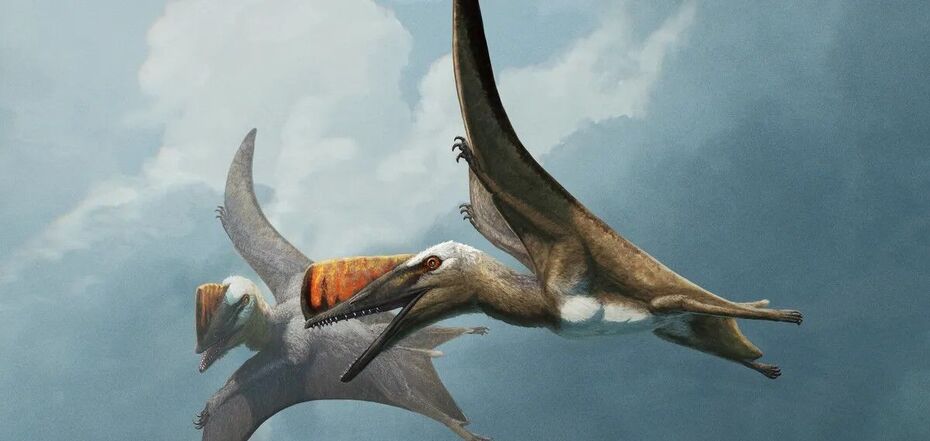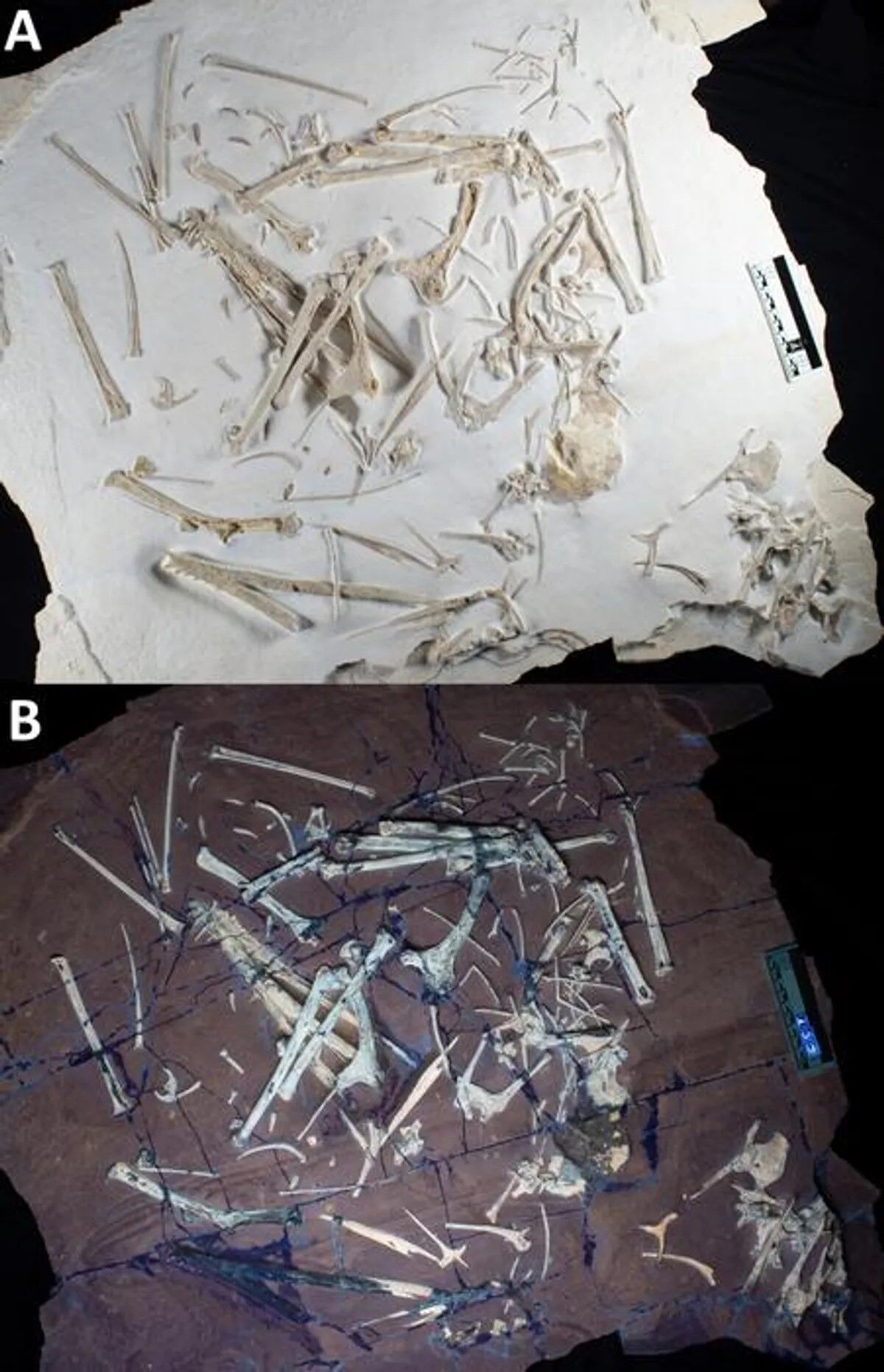News
A newly discovered species with a sword tail has clarified key stages of pterosaurs' evolution. Photo
Scientists have identified a well-preserved fossil skeleton of a pterosaur found in the southeastern German state of Bavaria. The new species of flying reptile, named Skiphosoura bavarica, fills a major gap in understanding the evolution of these predators, which were important components of ecosystems during the dinosaur era.
Skiphosoura, which had a sword-like tail, lived in the late Jurassic period approximately 147 million years ago. This pterodactyl is anatomically transitional between the relatively small long-tailed pterosaurs that emerged about 80 million years ago and the short-tailed ones that were giants of the Cretaceous period, such as Quetzalcoatlus, whose wingspan rivaled that of an F-16 fighter jet, GeoNews writes.
According to paleontologists, the discovery of Skiphosoura and another species called Dearc sgiathanach, which lived about 170 million years ago in Scotland, helped clarify key events in the evolution of pterosaurs.
"It also brings other pterosaur finds we had already made into focus, better explaining where they go in the family tree," said lead study author, paleontologist David Hone of Queen Mary University of London.
The newly discovered creature, the scientific name of which means "sword tail from Bavaria," had a short and stiff pointed tail, the researchers describe. Almost every bone in the specimen's skeleton is preserved in three dimensions and not broken like many fossils.
"The bony crest is limited to the front of the snout. It was likely brightly coloured or patterned. The teeth are quite long and sharp. They are for puncturing and holding," Hone described.
Together with dinosaurs, pterosaurs were wiped out 66 million years ago as a result of a mass extinction after an asteroid hit the Earth, scientists remind.
Only verified information is available on OBOZ.UA Telegram channel and Viber. Do not fall for fakes!





























